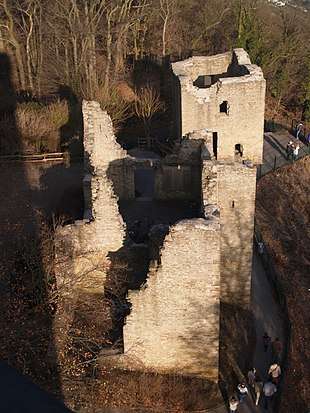776
| Millennium: | 1st millennium |
|---|---|
| Centuries: | |
| Decades: | |
| Years: |
| 776 by topic |
|---|
| Leaders |
| Categories |
|
| Gregorian calendar | 776 DCCLXXVI |
| Ab urbe condita | 1529 |
| Armenian calendar | 225 ԹՎ ՄԻԵ |
| Assyrian calendar | 5526 |
| Balinese saka calendar | 697–698 |
| Bengali calendar | 183 |
| Berber calendar | 1726 |
| Buddhist calendar | 1320 |
| Burmese calendar | 138 |
| Byzantine calendar | 6284–6285 |
| Chinese calendar | 乙卯年 (Wood Rabbit) 3472 or 3412 — to — 丙辰年 (Fire Dragon) 3473 or 3413 |
| Coptic calendar | 492–493 |
| Discordian calendar | 1942 |
| Ethiopian calendar | 768–769 |
| Hebrew calendar | 4536–4537 |
| Hindu calendars | |
| - Vikram Samvat | 832–833 |
| - Shaka Samvat | 697–698 |
| - Kali Yuga | 3876–3877 |
| Holocene calendar | 10776 |
| Iranian calendar | 154–155 |
| Islamic calendar | 159–160 |
| Japanese calendar | Hōki 7 (宝亀7年) |
| Javanese calendar | 671–672 |
| Julian calendar | 776 DCCLXXVI |
| Korean calendar | 3109 |
| Minguo calendar | 1136 before ROC 民前1136年 |
| Nanakshahi calendar | −692 |
| Seleucid era | 1087/1088 AG |
| Thai solar calendar | 1318–1319 |
| Tibetan calendar | 阴木兔年 (female Wood-Rabbit) 902 or 521 or −251 — to — 阳火龙年 (male Fire-Dragon) 903 or 522 or −250 |

Ruins of Castle Syburg (near Dortmund)
Year 776 (DCCLXXVI) was a leap year starting on Monday (link will display the full calendar) of the Julian calendar. The denomination 776 for this year has been used since the early medieval period, when the Anno Domini calendar era became the prevalent method in Europe for naming years.
Events
By place
Byzantine Empire
- April 24 – Emperor Leo IV ("the Khazar") appoints his 5-year-old son Constantine VI co-ruler of the Byzantine Empire. This leads to an uprising of Leo's half-brothers, including Caesar Nikephoros, the second son of former emperor Constantine V. The revolt is quickly suppressed; Leo has the conspirators blinded, tonsured and exiled to Cherson (Southern Crimea) under guard.[1]
Europe
- King Charlemagne spends Easter in Treviso (Northern Italy), after putting down a rebellion in Friuli and Spoleto. He removes Hrodgaud of Friuli from power, and reforms the duchy as the March of Friuli (military frontier district).[2] Co-conspirators who support the revolt are Arechis II, duke of Benevento, and Adalgis, son of former Lombard king Desiderius. Frankish counts are placed in the cities of Friuli.
- Saxon Wars: The Saxons again revolt against Christianity and Frankish rule. Eresburg falls, but a Saxon assault upon the castle of Syburg (near Dortmund) fails. Charlemagne hurriedly returns from Italy, launching a counter-offensive which defeats the Saxons. Most of their leaders are summoned to the Lippe at the town of Bad Lippspringe (North Rhine-Westphalia), to submit formally to Charlemagne.[3]
Britain
- Battle of Otford: King Egbert II of Kent defeats the Mercians under King Offa (near Otford), and re-asserts himself as ruler of Kent.
Births
- Al-Jahiz, Afro-Muslim scholar and writer (d. 868)
- Bai Xingjian, Chinese poet and writer (d. 826)
- Lu Sui, chancellor of the Tang Dynasty (d. 835)
- Sahnun ibn Sa'id, Muslim jurist (or 777)
- Tahir ibn Husayn, Muslim governor (or 775)
Deaths
- Cellach mac Dúnchada, king of Leinster (Ireland)
- Cináed Ciarrge mac Cathussaig, Dál nAraide king
- Flaithniadh mac Congal, abbot of Clonfert
- Hrodgaud, duke of Friuli (Italy)
- Humayd ibn Qahtaba, Muslim military leader
- Nuada ua Bolcain, abbot of Tuam (Ireland)
References
- ↑ The Chronicle of Theophanes Anni Mundi 6095–6305 (A.D. 602–813): Tr. Harry Turtledove (University of Pennsylvania Press, 1982), p. 137
- ↑ David Nicolle (2014). The Conquest of Saxony AD 782–785, p. 15. ISBN 978-1-78200-825-5
- ↑ David Nicolle (2014). The Conquest of Saxony AD 782–785, pp. 15–16. ISBN 978-1-78200-825-5
This article is issued from
Wikipedia.
The text is licensed under Creative Commons - Attribution - Sharealike.
Additional terms may apply for the media files.